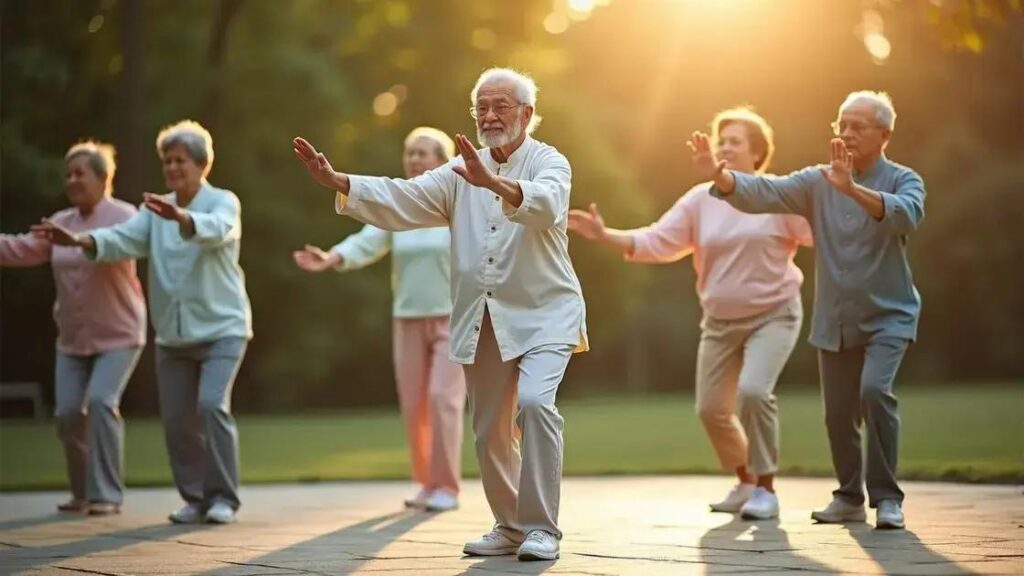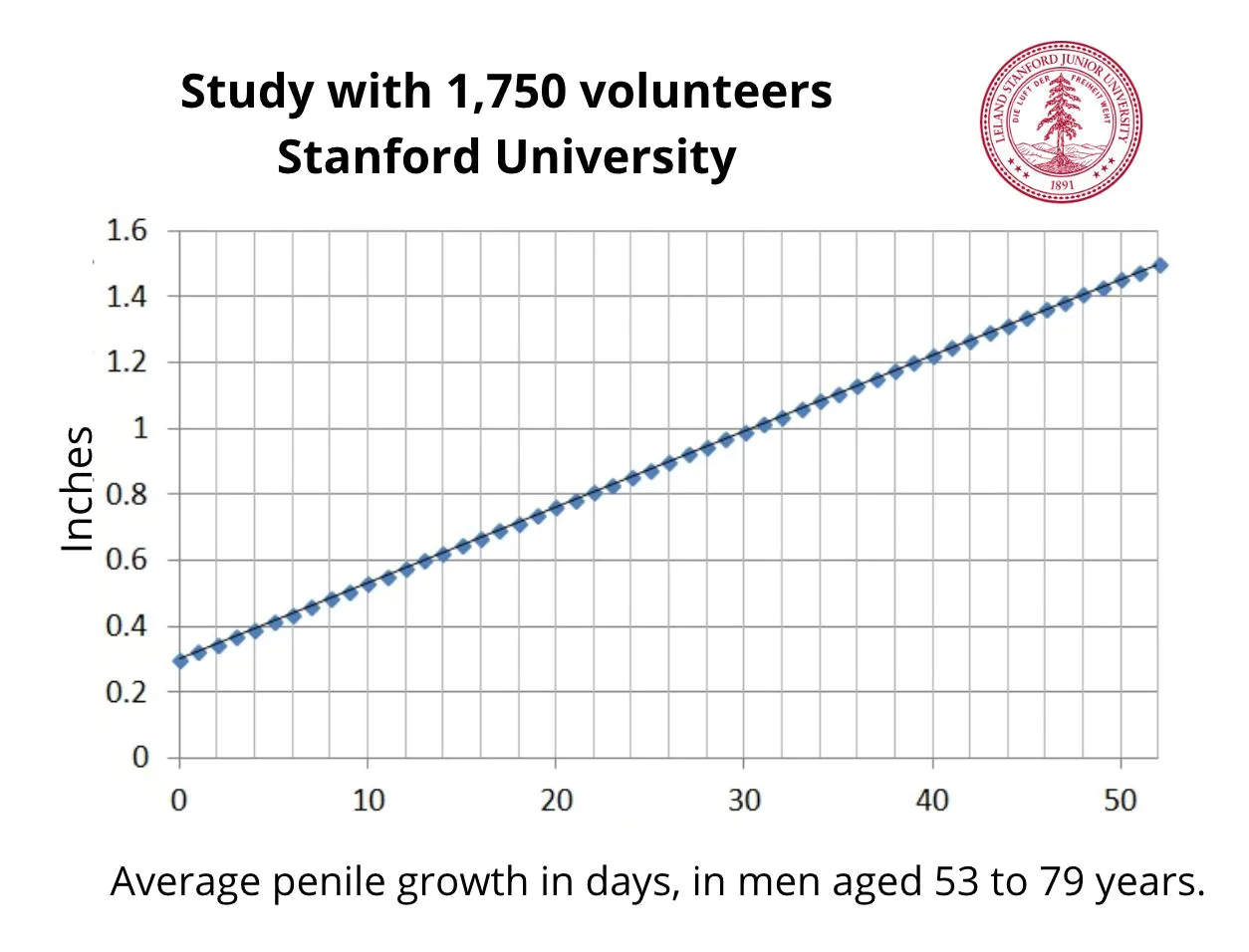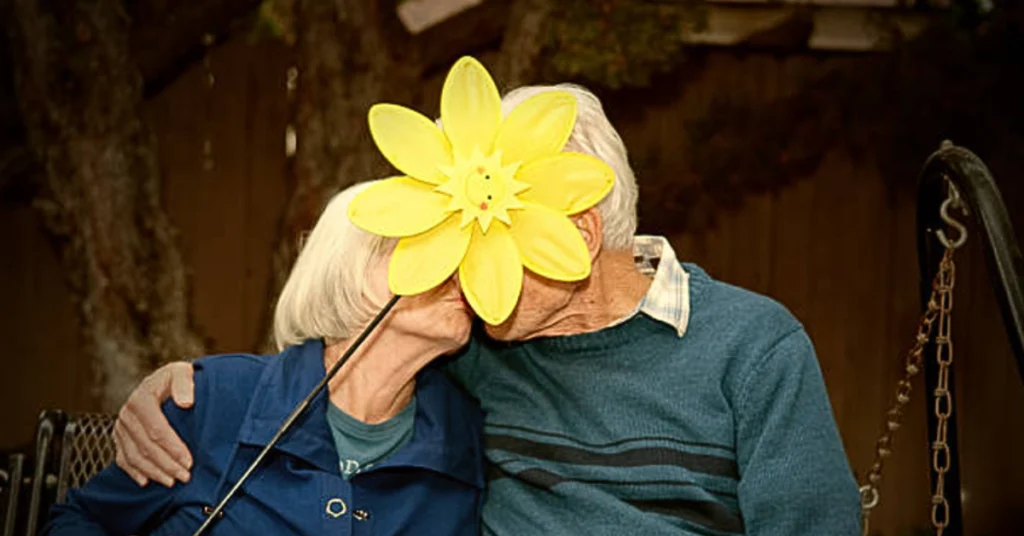The role of Tai Chi in improving mobility after 50 is significant, as it offers numerous benefits such as enhanced balance, flexibility, and strength through gentle, flowing movements. Regular practice can lead to noticeable improvements in overall mobility and well-being, making it a valuable exercise option for older adults.
As we age, maintaining mobility becomes essential for our overall health and quality of life. The role of Tai Chi in improving mobility after 50 is increasingly recognized as a gentle yet effective way to boost flexibility and balance. This ancient martial art involves slow, flowing movements that ease wear on the joints while promoting strength and stability. In this article, we’ll dive into the many benefits of Tai Chi, how it enhances coordination, and provide tips for getting started safely and effectively.
Understanding Tai Chi and Its Benefits
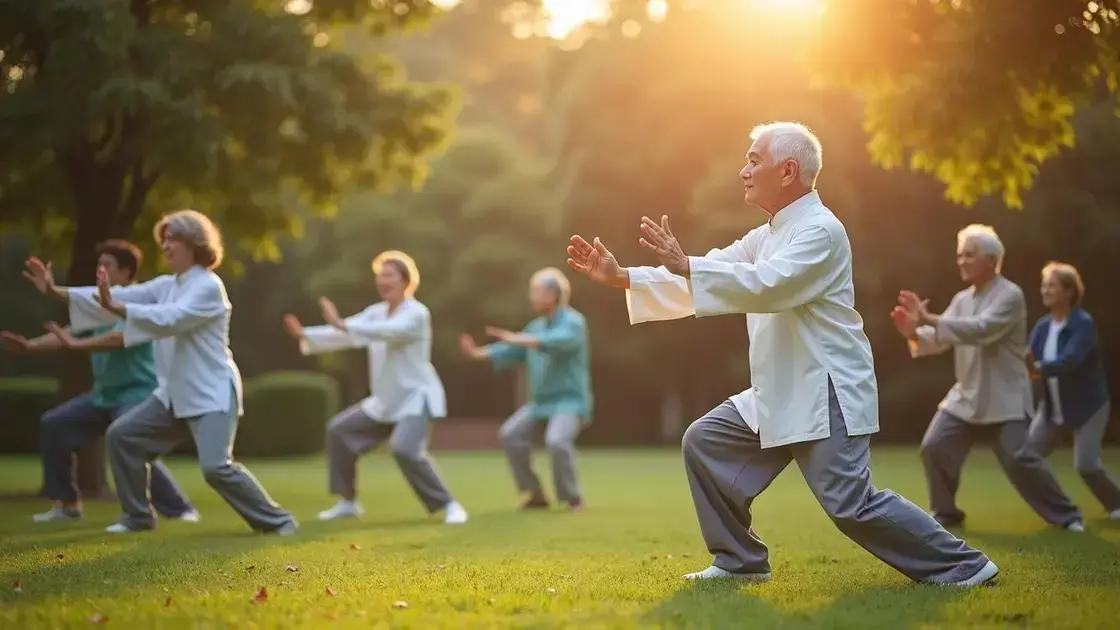
Tai Chi is a form of exercise that combines movement, meditation, and breath control. Originating in China, it emphasizes slow, graceful movements that flow seamlessly into one another. This makes Tai Chi especially beneficial for individuals over 50, as it helps to improve mobility, balance, and overall wellness.
Benefits of Tai Chi
One of the key benefits of Tai Chi is its ability to enhance flexibility and strength in a gentle manner. Unlike high-impact exercises, Tai Chi minimizes stress on the joints, making it a safer option for older adults. Regular practice can lead to improved joint health and a greater range of motion.
Mental Well-Being
Tai Chi also promotes mental health. The meditative aspect of the practice encourages relaxation and reduces stress levels. Participants often report feeling more centered and calm after a session. This mental clarity can contribute to better emotional health and an improved quality of life.
Social Connection
Furthermore, practicing Tai Chi in a group setting can foster social connections. Engaging in this activity with others reduces feelings of isolation and provides a sense of community, which is vital for mental health.
Overall Physical Health
Studies suggest that regular Tai Chi practice can lead to lower blood pressure, better sleep quality, and enhanced cardiovascular health. All these factors together create a holistic approach to wellness that supports aging gracefully.
How Tai Chi Enhances Balance and Coordination
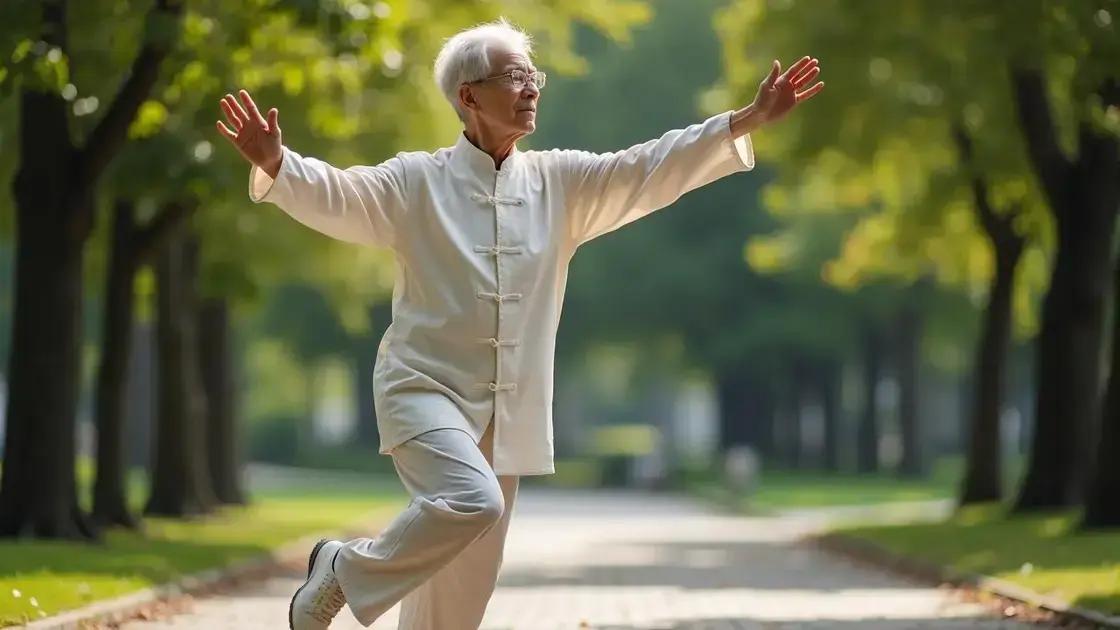
Balance and coordination are vital aspects of physical health, especially as we age. Tai Chi is an excellent practice for improving these skills through intentional movement and focus. The flowing motions promote a sense of stability while teaching the body how to react better to different challenges.
Improved Balance
Tai Chi involves shifting body weight from one leg to the other. This gradual transition helps strengthen the muscles and increases proprioception, which is our body’s ability to sense its position in space. A stronger sense of balance reduces the risk of falls, a common concern for those over 50.
Coordination Through Movement
Each Tai Chi movement requires careful coordination of the arms, legs, and torso. Practicing these movements fosters better motor skills and enhances the body’s ability to synchronize actions. This can improve daily tasks, making them easier and safer. Regular practice encourages smooth motion and fluidity, allowing individuals to move gracefully.
Mindfulness and Focus
The meditative aspect of Tai Chi also plays a critical role in enhancing balance and coordination. Being present in the moment sharpens concentration. This awareness helps individuals react more effectively to unexpected shifts in their environment.
Incorporating Tai Chi Into Your Routine
Incorporating Tai Chi into your regular exercise routine can be simple. Practicing just a few times a week can lead to noticeable improvements in both balance and coordination. This makes everyday activities like walking, bending, or reaching safer and more manageable.
Mobility Improvements Through Regular Practice
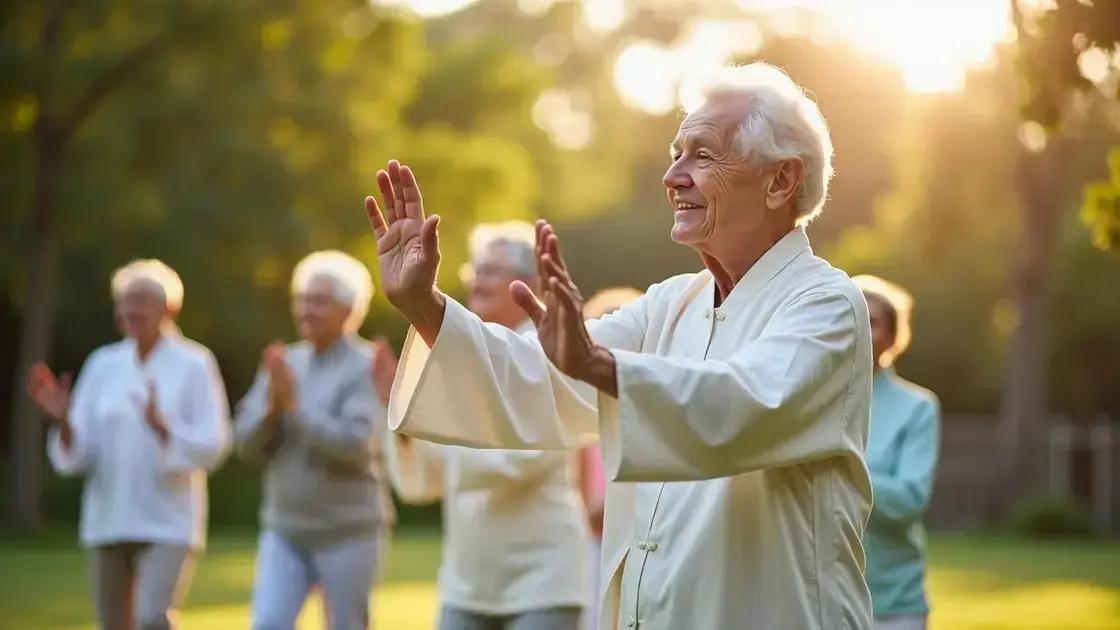
Regular practice of Tai Chi can significantly enhance mobility, especially for individuals over 50. This ancient martial art focuses on slow and controlled movements that gently stretch muscles and improve joint flexibility.
Increased Range of Motion
As we age, our joints and muscles can become stiff. Tai Chi encourages natural movement and gradually increases the range of motion. By practicing various forms and postures, individuals can help loosen tight muscles and improve flexibility.
Strengthening Muscles
Another key benefit of Tai Chi is its ability to strengthen core and leg muscles. When moving through different positions, participants engage multiple muscle groups. This resistance training helps build strength, which can enhance overall mobility and independence.
Consistency is Key
To see significant improvements, consistency is crucial. Practicing Tai Chi regularly, even for just 15 to 30 minutes a few times a week, can lead to gradual but lasting changes in mobility. Making it a part of your routine will also foster a sense of discipline and commitment.
Reducing Pain and Discomfort
Many people report less discomfort and pain in their joints after taking part in Tai Chi. The gentle movements promote circulation, helping to relieve tension. This feeling of relief often motivates continued practice, reinforcing the cycle of improved mobility.
Social Engagement
Joining a Tai Chi class or group can provide social support and accountability, making it easier to stick with a regular practice. The community aspect can further encourage individuals to engage more actively in their health journey, enhancing both mobility and overall well-being.
Getting Started with Tai Chi After 50
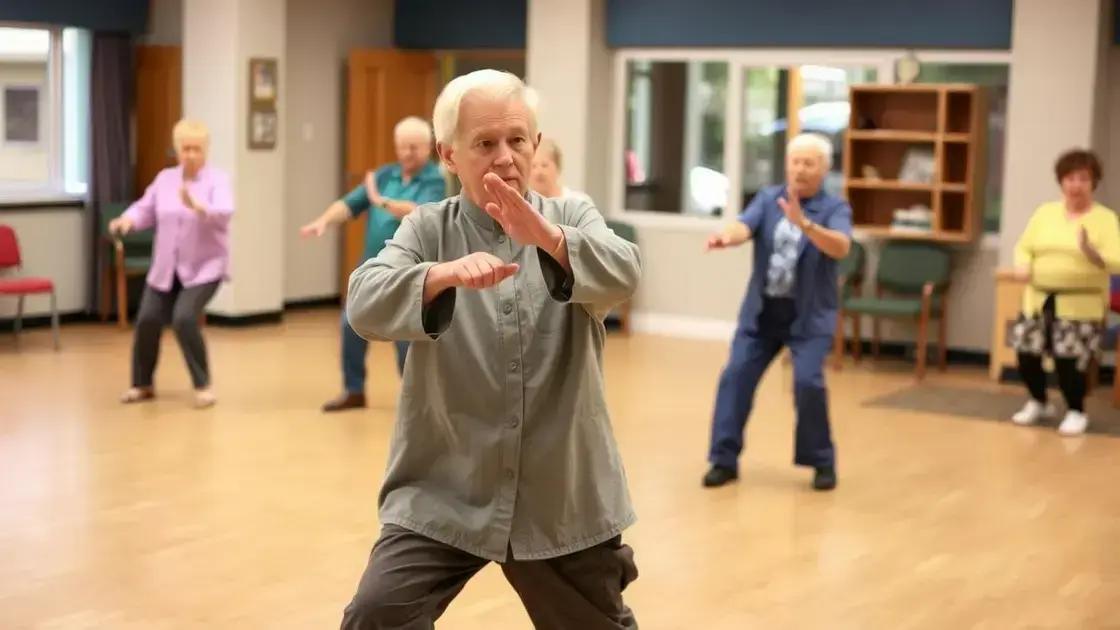
Getting started with Tai Chi after 50 is easy and rewarding. This gentle practice is designed for all fitness levels, making it a great choice for older adults looking to enhance their mobility.
Finding a Class or Online Resource
The first step is to find a local Tai Chi class or an online resource. Look for community centers, gyms, or wellness studios that offer Tai Chi. Many also provide introductory classes specifically for beginners. If in-person classes are not available, there are numerous online videos and tutorials that can guide you through the basics.
Choosing the Right Style
There are different styles of Tai Chi, such as Yang, Chen, and Wu. Each style has unique characteristics, but all focus on slow, flowing movements. Consider trying a few classes to see which style resonates with you the most. Ask the instructor about the benefits of their specific style.
Dress Comfortably
It’s essential to wear comfortable clothing that allows freedom of movement. Soft, flexible shoes are also recommended since they provide support while allowing your feet to feel the ground. This connection can enhance balance, an essential aspect of Tai Chi.
Start Slow
When beginning your practice, start slow. Focus on mastering basic movements before progressing to more complex forms. Even practicing for 10 to 15 minutes a day can be beneficial. Gradually increase the duration as you become more comfortable with the movements.
Listen to Your Body
It’s important to listen to your body and not push yourself too hard. If you feel pain or discomfort during a movement, stop and adjust. Tai Chi should feel good, and modifications can be made to suit your comfort level. Always consult with a healthcare provider before starting any new exercise program.
Make it a Routine
Consistency is vital for reaping the benefits of Tai Chi. Try to make it part of your daily routine. Whether you practice at home or attend classes, regular engagement will enhance your balance, flexibility, and overall mobility.
Embracing Tai Chi for a Healthier Tomorrow
Incorporating Tai Chi into your daily routine can lead to significant improvements in mobility, balance, and overall well-being, especially for those over 50. This gentle practice not only enhances physical health but also fosters mental clarity and social connections.
As you embark on this journey, remember to start slowly, choose the right resources, and listen to your body. With regular practice, the benefits of Tai Chi will become increasingly evident, allowing you to age gracefully and maintain an active lifestyle.
By making Tai Chi a part of your life, you are investing in a healthier, more vibrant future.
FAQ – Frequently Asked Questions About Tai Chi for Those Over 50
What are the main benefits of practicing Tai Chi after 50?
Practicing Tai Chi after 50 can improve mobility, balance, flexibility, and overall mental well-being while reducing the risk of falls.
How often should I practice Tai Chi?
It’s recommended to practice Tai Chi regularly for 15 to 30 minutes a few times a week to see significant improvements in health and mobility.
Can I start practicing Tai Chi if I have limited mobility?
Yes, Tai Chi is adaptable for all fitness levels, and individuals with limited mobility can benefit from gentle movements and modifications.
What should I wear while practicing Tai Chi?
Wear comfortable clothing that allows for easy movement and flexible shoes that provide support while still allowing for ground contact.
Is it necessary to join a class to learn Tai Chi?
While joining a class is beneficial for learning proper techniques and meeting others, many resources, including online videos, can help you get started at home.
How can Tai Chi improve my balance?
Tai Chi incorporates slow, controlled movements that enhance proprioception and strengthen muscles, leading to better balance and coordination.

